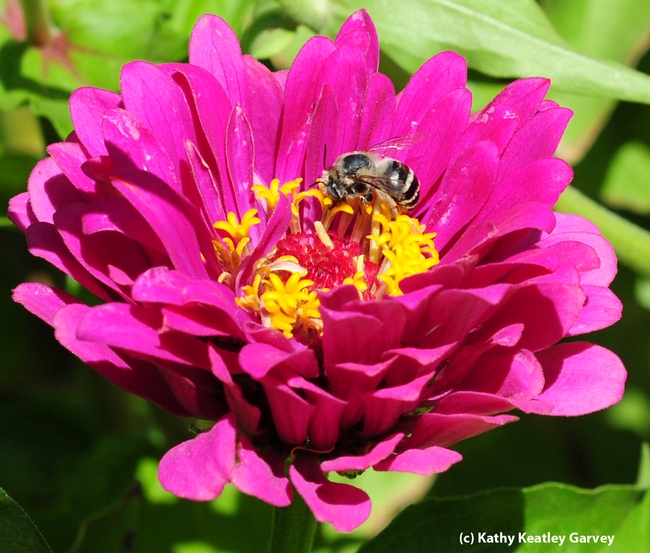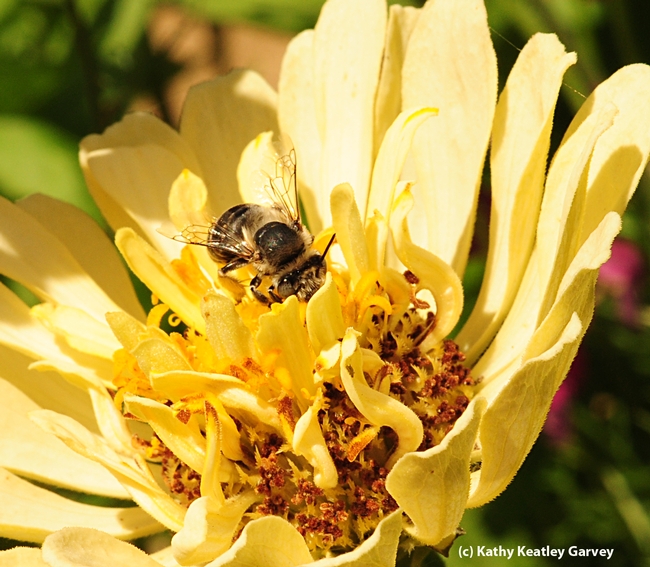Diggin' the digger bee...
We spotted this female digger bee, Anthophora urbana, zooming in on some zinnias at UC Davis. She buzzed loudly, virtually owning the zinnia patch. Smaller sweat bees scattered.
The bee, identified by native pollinator specialist Robbin Thorp, emeritus professor of entomology, is a solitary, ground nesting bee. "She has been around for a while judging by the worn (hairless) patch in the middle of the thorax," Thorp points out. "She has a dense brush of white hairs on her hind legs (scopa) for pollen transport."
Anthophoridae, described by Christopher O'Toole and Anthony Raw in their book, Bees of the World, is a "very large family...found in all parts of the world. Many are robust and resemble bumble bees."
"Most species nest in the ground while a few excavate in dead wood," they write.
The genus, Anthophora, includes more than 450 species worldwide. It's one of the largest in the Apidae family, which includes honey bees, carpenter bees, bumble bees, cuckoo bees and the like.
Anthophora urbana differs sharply from our honey bee, Apis mellifera.
The honey bee is social, living in a hive with some 60,000 other bees and sharing the workload. The digger bee is solitary.
The honey bee gathers nectar and pollen (and also propolis, from plant resin) and makes honey. The digger bee forages for nectar and pollen but does not make honey.
Occasionally, as floral visitors, they bump into each other. The social and the solitary...
Attached Images:


